
Mold and Mildew Growth
Mold and mildew had formed along many of the floor joists of this crawl space, as well as the fiberglass insulation batts. This can occur on any organic materials when the relative humidity reaches over 60% during warmer temperatures. Musty odors and mold spores can find their way up into the home and irritate those with allergies and asthma.
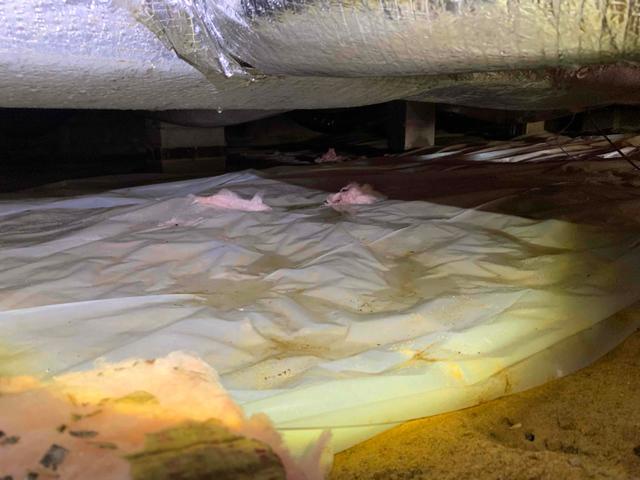
Exposed Dirt Flooring and Fiberglass Chunks
Many areas of the dirt flooring were left exposed, allowing the earth's moisture to rise into the crawl space and raise the relative humidity. Because of this, many damp chunks of the fiberglass batts have fallen to the ground after absorbing much of the excessive moisture. When the relative humidity reaches 100%, condensation begins to occur, and this has caused many puddles to form within the crawl space.
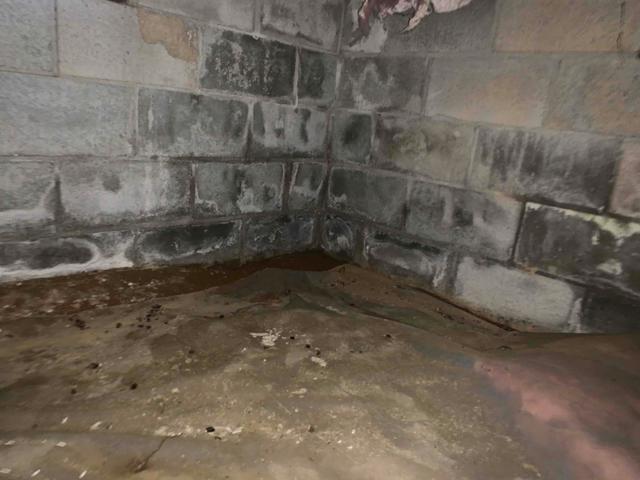
Efflorescence on Foundation Walls
The chalky, powdery substance formed along the foundation walls is called efflorescence. This occurs when moisture seeps through the porous cinderblock walls, bringing along with it the inner salts and sediments to the surface. The infiltrating water then adds to the elevated relative humidity.

Open Vents on Foundation Walls
Open vents line the foundation walls of this crawl space, allowing the outside air and moisture to freely enter the crawl space and affect the relative humidity and environment. The idea behind these openings was to help ventilate the crawl space, but instead, the air and moisture enter the crawl space, where it becomes trapped.
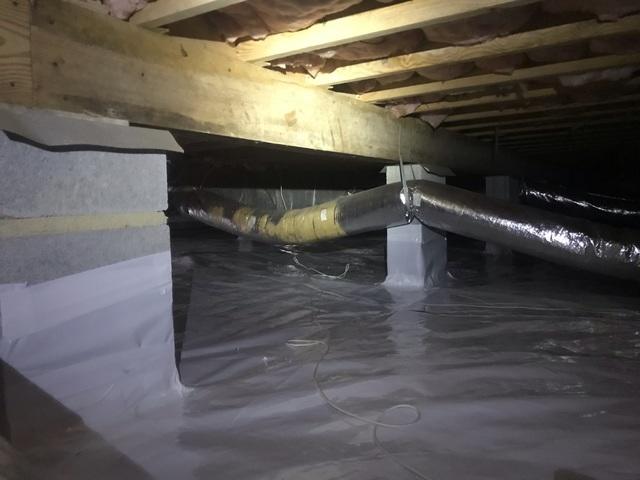
Mold Remediation
The homeowners did not choose to act on our proposal for mold remediation of the floor joists, but we did remove the moldy fiberglass insulation and replaced them with R19 unfaced fiberglass batts. Even if the homeowners requested mold remediation, it is important to note that the mold and mildew could reform if the relative humidity and temperature are not regulated in the crawl space.
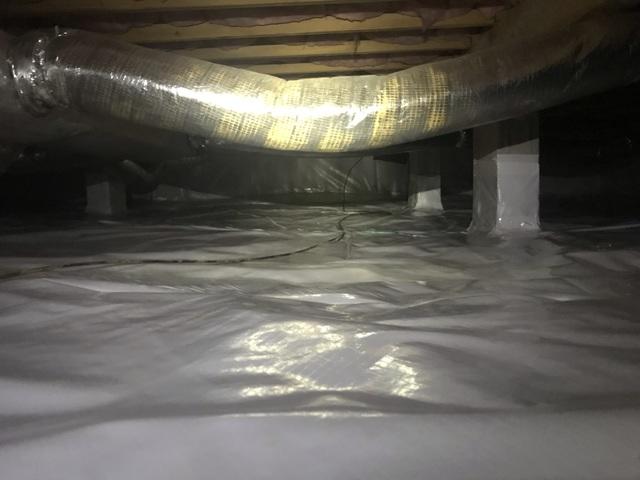
CleanSpace Light Vapor Barrier
We installed a durable 10-mil vapor barrier, called, CleanSpace Light, over the dirt flooring of this crawl space. It is wrapped around all piers, sealed with vinyl tape, and mechanically fastened to the foundation walls at least six to eight inches above outside grade. This vapor barrier will help to protect the crawl space from any moisture rising from the earth.
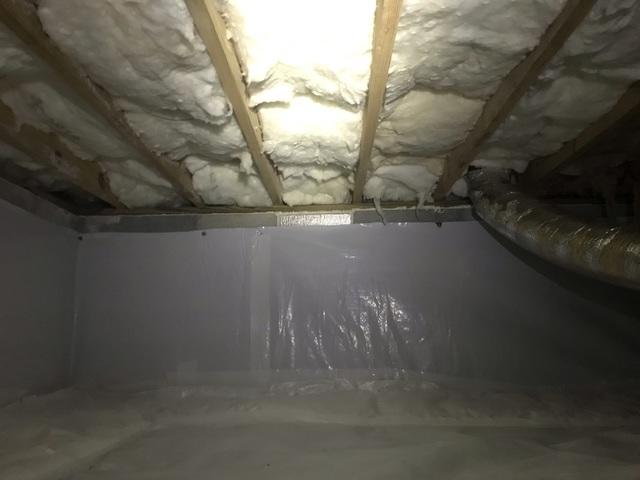
Blocking the Open Vents
The open vents lining the foundation walls were allowing the outside air and moisture to freely enter the crawl space. We internally blocked these open vents using custom-fit foamboard pieces, which will mitigate the amount of outside influence on the crawl space's relative humidity and environment.
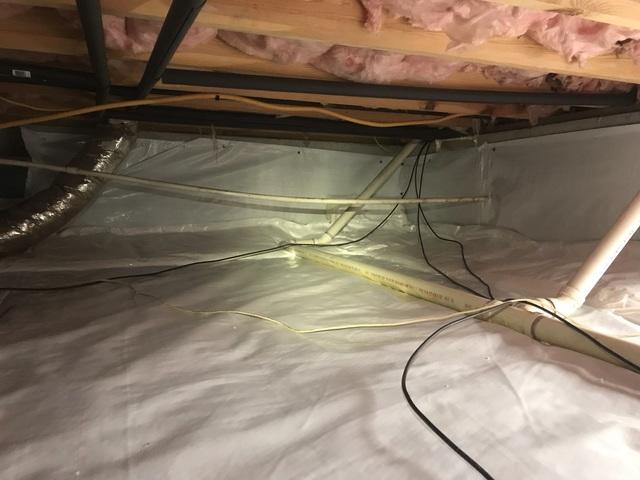
Sealing the Foundation Walls
While we sealed the vapor barrier along the foundation walls, the homeowner chose not to insulate their crawl space. We would suggest swapping the fiberglass insulation batts in the floor joists with either closed-cell spray foam or our custom foamboard insulation pieces on the foundation walls. This would not only insulate the entire crawl space but act as an air barrier and vapor retarder, protecting the crawl space from outside moisture seeping through the porous foundation walls.

